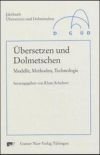
-
 Anglický jazyk
Anglický jazyk
On the acquisition of negation: What role does Universal Grammar play in first and second language acquisition?
Autor: Lars Berghaus
Seminar paper from the year 2006 in the subject American Studies - Linguistics, grade: 2,3, University of Cologne, 14 Literaturquellen entries in the bibliography, language: English, abstract: The ability to learn and produce natural language and move beyond... Viac o knihe
Na objednávku, dodanie 2-4 týždne
16.65 €
bežná cena: 18.50 €
O knihe
Seminar paper from the year 2006 in the subject American Studies - Linguistics, grade: 2,3, University of Cologne, 14 Literaturquellen entries in the bibliography, language: English, abstract: The ability to learn and produce natural language and move beyond the communication of sign and body language is unique to human beings. The acquisition of language is possible since grammar is assumed to be universal. Universal Grammar (UG) defines properties of language itself. CHOMSKY'S theory of grammar is constrained, first, by universal grammatical principles which determine the broad outline of grammar and are generally true and, second, by grammatical parameters which are language-specific dimensions of a particular language and allow crosslinguistic variation. The first doesn't have to be learned since it is part of the innate language faculty; the latter needs to be acquired and is assumed to be linked to individual items in the lexicon (CAPDEVILA I BATET ET AL. 1995, 31). The central task of acquisition is thus the construction of the grammar of the target language, in other words, the setting of parameters, which is also referred to as grammatical learning (versus lexical learning).
One of the parameters that needs to be set is the construction of negation. In this paper, I look at the nature and operation of negation (part I) and how children and adults acquire it during their first and second language acquisition process of different languages (parts II and III). Moreover, underlying principles and mechanisms of L1 and L2 acquisition will be discussed and compared. I want to investigate the way in which the principles and parameters of UG (do not) operate over time as the individual's grammar gradually develops and find out if the children's and adults' grammars conform to these.
An individual acquiring L1 has to access the innate grammatical principals of UG in the initial state and learn the language-specific grammatical parameters. L1 acquisition is rapid, uniform and almost error-free. How the acquisition of negation for an L1-learner develops will be presented in the second part.
L2-learners have already learned an L1 and are expected to be competent users of the specific grammar of their first language. They learn a second language, i.e. determine a new setting for relevant grammatical parameters in order to arrive at a linguistic system of the target L2. Their acquisition is characterized by great variability crosslinguistically and across individual learners (MEISEL 1997, 227). Part 3 looks at 2LA of negation and wants to describe whether 1LA and 2LA share similarities and if UG plays a role in 2LA.
- Vydavateľstvo: GRIN Verlag
- Rok vydania: 2007
- Formát: Paperback
- Rozmer: 210 x 148 mm
- Jazyk: Anglický jazyk
- ISBN: 9783638794831




 Nemecký jazyk
Nemecký jazyk 
 Ruský jazyk
Ruský jazyk 




